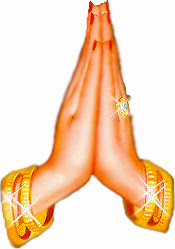How we arrived at Industry 4.0 / සිව් වෙනි කාර්.මික විප්ලවය දක්වා සැකෙවින්
Everyone is wondering what is Industry 4.0 and most of us need clarification about what Industry 4.0 means and how we have arrived here. So let's have a brief look at how we are at this point today and what has led to it.
ඉන්ඩස්ට්රි 4.0 කියලා හැමෝම අහන, හොයන ඒත් ඇත්තටම ඒකෙ හරිම තේරුම නොදන්න සිව් වෙනි කාර්.මික විප්ලවය ගැන ටිකක් කතා කරන්න හිතුවා. 4 වෙනි විප්ලවය දක්වා විකාශණය උනේ කොහොමද කියල බොහොම කෙටියෙන් මේ ලිපියෙන් විස්තර කරන්න තමා කොල්ලගෙ බලාපොරොත්තුව.
1st Industrial Revolution (Late 18th to early 19th century):
Key Features: The introduction of mechanization and steam
power transformed industries, particularly textiles and manufacturing.
Innovations: Steam engines, textile machinery, iron
production, and the development of railways.
Impact: Transition from hand production to machine-based
manufacturing, leading to the growth of factories and increased production
efficiency.
2nd Industrial Revolution (Mid-19th to early 20th century):
Key Features: This revolution was characterized by the mass
production of goods, fueled by advancements in electricity, steel, and oil.
Innovations: Electricity, assembly lines, mass production
techniques, the telephone, and the automobile.
Impact: Further mechanization, increased production
capacity, and the development of industries such as steel, oil, and chemicals.
This period saw significant advancements in transportation and communication
systems.
දෙවෙනි කාර්.මික විප්ලවය (ක්රි.ව 19 වෙනි සියවසේ මැද භාගයේ සිට 20 වෙනි සියවසේ මුල් භාගය දක්වා)
3rd Industrial Revolution (Late 20th century):
Key Features: The advent of electronics and information
technology revolutionized industries and brought about automation and
computerization.
Innovations: Computers, semiconductors, telecommunications,
the internet, and the rise of personal computers.
Impact: The rise of electronics and computer technology-enabled automation in manufacturing processes. It led to the development of industries like telecommunications, semiconductors, and information technology. The Internet played a significant role in connecting global networks and facilitating information exchange.
Tools we use for our day to day regular jobs are the innovations of 3rd Industrial revolution if I state it in the simplest possible way.
තුන්වෙනි කාර්.මික විප්ලවය (ක්රි.ව 20 වෙනි සියවසේ අග භාගය )
4th Industrial Revolution (Present):
Key Features: The convergence of digital technologies, automation, and connectivity to transform industries through data-driven decision-making and artificial intelligence.
Innovations: Internet of Things (IoT), artificial
intelligence (AI), robotics, 3D printing, cloud computing, big data analytics,
and augmented reality (AR).
Impact: The Fourth Industrial Revolution involves the
integration of digital technologies into all aspects of manufacturing and
society. It enables the collection and analysis of vast amounts of data,
facilitates automation and robotics, and drives advancements in AI and machine
learning. Key features include smart factories, IoT-enabled supply chains, and
data-driven decision-making processes.
හතර වෙනි කාර්.මික විප්ලවය (අද අපි අත්විඳින, ඉදිරි අවුරුදු කීපයේ දියුණුව කරා යන විප්ලවය )
කර්.මාන්ත වලට ඇති වූ බලපෑම: අද දකින්නට හැකි සියලුම නිෂ්පාදන අංශ සහ මිනිස් එදිනෙදා ජීවිත බොහෝ දුරට ඩිජිටල්කරණයට ලක්වීම හතර වෙනි කාර්.මික විප්ලවය විසින් කර්.මාන්ත සහ සමාජය යන දෙකටම ඇති කරන ලද විශාලතම බලපෑමයි. එදිනෙදා මනුෂ්ය හැසිරීම් වලින් එකතු කරගන්නා දත්ත විශාල දත්ත ගබඩාවක එක් රැස් කරගෙන කෘත්රිම බුද්ධිය මගින් ඒ දත්ත විශ්ලේෂණය මගින් අනාගත තීරණ වඩා නිරවද්යතාවයකින් ලබා ගැනීම වගේම එකම මිනිසෙක් නැතිව ස්වයංක්රීයව වැඩ කටයුතු සිදු වෙන විශාල කර්.මාන්තශාලා බිහි වෙන දිනය වැඩි ඈතක නෙමෙයි.
The Fourth Industrial Revolution, or Industry 4.0, represents the integration of physical systems with digital technologies, enabling automation, data exchange, and smart manufacturing processes. It emphasizes the connectivity and interoperability of machines, systems, and people. Industry 4.0 is characterized by the extensive use of data analytics, AI, machine learning, and the ability to create cyber-physical systems that can operate autonomously and make intelligent decisions.
සිව් වෙනි කාර්.මික විප්ලවය එහෙමත් නැත්නම් ඉන්ඩස්ට්රි 4.0 කියන්නේ 3 වෙනි කාර්.මික විප්ලවයෙන් හොයාගත් බොහෝ දේ වැඩි දියුණු කරලා කාර්.මික නොවන කෘත්රිම මොලයන් හෝ ඒ හා සමාන යෙදවුම් මගින් බොහෝ කටයුතු ස්වයංක්රීයකරණය කිරීම හෝ තීරණ ගැනීමේදි ඉහලම නිරවද්යතාවයක් තබාගණීමට මිනිසාට උදව් කිරීමේ ඩිජිටල් විප්ලවයක් කිව්වොත් වඩා නිවැරදියි.
The evolution of industrial revolutions has brought about significant advancements, transforming the way industries operate, improving productivity, and efficiency, and driving economic growth. Each revolution builds upon the achievements of its predecessors, with Industry 4.0 representing a new era of connectivity, digitization, and intelligent automation in manufacturing and beyond. The final thought that came into my mind is: couldn't it be Digital Revolution 1.0 instead of Industrial Revolution 4.0?
හැම කාර්.මික විප්ලවයකටම පොදු එකම එක කරුණක් වෙන්නේ ඒ අවධියේ සිදු වෙන හැම වැඩි දියුණු වීමක්ම ඉන් පෙර සොයා ගත් නවෝත්පාදන මත පදනම් වෙලා සිදු වීමයි. ඒ වගේම මේ හැම විප්ලවයක්ම කලින් තිබුණාට වඩා කාර්යක්ෂමතාවය සහ ආර්ථික වර්ධනයක් ලෝකයට දායාද කලා. මේ කාර්.මික විප්ලව අංක 4ත් ලෝකයට ඒ වගේම වර්.ධනයක් ලබා දෙන විප්ලවයක් වෙයි කියලා කොල්ලා හිතන අතරෙම මේක කාර්.මික විප්ලවයකට වඩා ඩිජිටල් විප්ලව අංක 1.0 වෙන්න බැරිද කියලත් කොල්ලට නොහිතුණාම නෙමෙයි.




Comments
Post a Comment
Comments in any sort will keep me going. If you see anything I could improve please let me know so that I could improve right away... | තරඟෙක දුවද්දි වදින වතුර පාරක් වගේ තමයි ඔයාලගේ අදහස්... කියල නිම කරන්න බැහැ. වෙලා තියෙනවනම් ආසයි දැනගන්න......